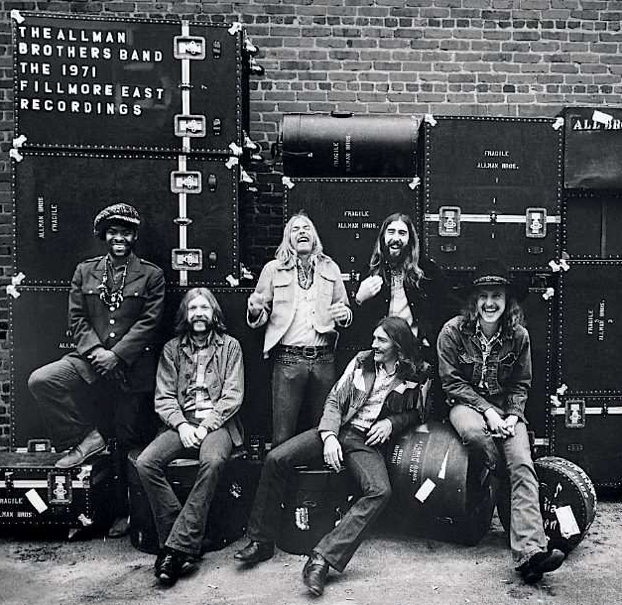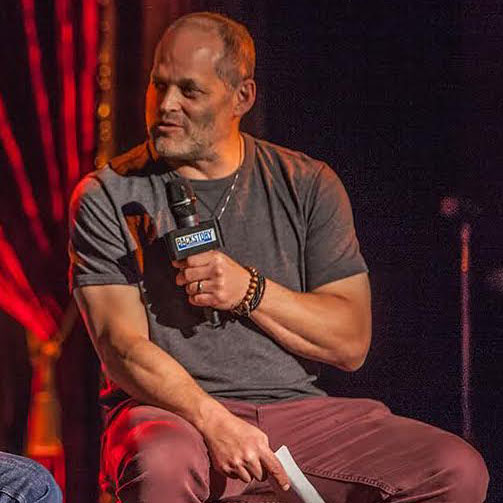
The Allman Brothers Band At Fillmore East has been considered rock’s best live album since its 1971 release.
Recorded March 12 and 13, 1971, at the New York club, the album captured the original Allman Brothers Band at the peak of their powers, playing with verve, grace, intensity and seemingly telepathic communication.
Guitarists Dickey Betts and Duane Allman finished one another’s phrases, spun beautiful leads off each other’s riffs and prodded themselves to guitar heights that have rarely, if ever, been equaled.
Over the years, different versions have been issued, including the expanded The Fillmore Concerts, but the holy grail for Allmans fans has been hearing the many unreleased tracks from the shows, mostly stemming from Friday, March 12, as most of the album was culled from the final night.
A new deluxe set, The 1971 Fillmore East Recordings, delivers almost all of the music played by the Allman Brothers at the Fillmore East during these shows in great, remastered sound. The set consists of six CDs or three Blu-ray discs, which are mixed for Surround Sound and bring the band’s performance to a shimmering new life.
Duane Allman famously invited several guests, including soprano saxophonist Juicy Carter, harmonica player Thom Doucette and percussionist Bobby Caldwell (the drummer from the headlining Johnny Winter And), to sit in, much to the consternation of producer Tom Dowd. Dowd convinced the band to banish the horns for the second night and chose different versions of songs or edited out most of the guests’ contributions, which can now be heard — and mostly prove Dowd’s point.
The final performance captured on the collection came a few months later, on June 27, 1971, the closing show of the Fillmore East. It includes promoter Bill Graham’s entire, ecstatic introduction, which concluded with “We’re going to round it out with the best of them all, the Allman Brothers Band.”
Get The Pick Newsletter
All the latest guitar news, interviews, lessons, reviews, deals and more, direct to your inbox!
We spoke with compilation producer Bill Levenson about the release.
GUITAR WORLD: This set has been talked about for so long. Do you think it came out the same way it would have if you had done it any time in the last 20 years?
The main difference in the last year or two was the Blu-ray and Surround Sound. I don’t think we would have done that in the Nineties when we were first talking about it. I think that’s what doing it in 2014 brought us — a Blu-ray set.
And I’m very excited about the Surround Sound. The goal was really to put the listener in the 10th row of the Fillmore, with everything in front of you and the reflections and the audience behind you. I grew up in New York and went into the Fillmore. It had a distinct sound, a fabulous sound, and you can feel the auditorium in any album recorded there. I was trying to recreate being in the Fillmore, and I do think we were able to capture the magic of what was in that hall.
”
Among other things, you finally brought us the sax stylings of Juicy Carter, which we’ve only been able to hear dabs of before. It’s really interesting but not hard to hear why Tom Dowd was upset about his sudden appearance during a recording.
Yes. What really made it work was just to find the place in the mix where it was forward but not too forward, dissonant but not too edgy. To be honest, there are moments where we buried him because he was went off in really dissonant tangents. It’s still there; you hear if you listen, but he’s been pulled back. During these times, he was playing two saxes at once — baritone and saxophone — and some of the playing gets really out there.
It was really the magic of the fader.
This set scratched a lot of our itches, but a big one that remains is the first show, Thursday, March 11, which Tom Dowd said he recorded and which apparently featured a full horn section.
Thursday night is the blind spot for all of us. I’ve picked through the vaults hundreds of times, and there’s not even a hint of it existing, not even a reference somewhere. The only time it’s even mentioned is in a Tom Dowd interview, and he’s no longer with us to ask. But I am certain that there’s no tape, not even a tape that’s taped over … I just used everything we had.
Alan Paul is the author of the best-selling book One Way Out: The Inside History of the Allman Brothers Band. You can read an excerpt about the recording of At Fillmore Easthere.
Alan Paul is the author of three books, Texas Flood: The Inside Story of Stevie Ray Vaughan, One Way Way Out: The Inside Story of the Allman Brothers Band – which were both New York Times bestsellers – and Big in China: My Unlikely Adventures Raising a Family, Playing the Blues and Becoming a Star in Beijing, a memoir about raising a family in Beijing and forming a Chinese blues band that toured the nation. He’s been associated with Guitar World for 30 years, serving as Managing Editor from 1991-96. He plays in two bands: Big in China and Friends of the Brothers, with Guitar World’s Andy Aledort.
“Around Vulgar, he would get frustrated with me because I couldn’t keep up with what he was doing, guitar-wise – Dime was so far beyond me musically”: Pantera producer Terry Date on how he captured Dimebag Darrell’s lightning in a bottle in the studio
“He ran home and came back with a grocery sack full of old, rusty pedals he had lying around his mom’s house”: Terry Date recalls Dimebag Darrell’s unconventional approach to tone in the studio

![A black-and-white action shot of Sergeant Thunderhoof perform live: [from left] Mark Sayer, Dan Flitcroft, Jim Camp and Josh Gallop](https://cdn.mos.cms.futurecdn.net/am3UhJbsxAE239XRRZ8zC8.jpg)









